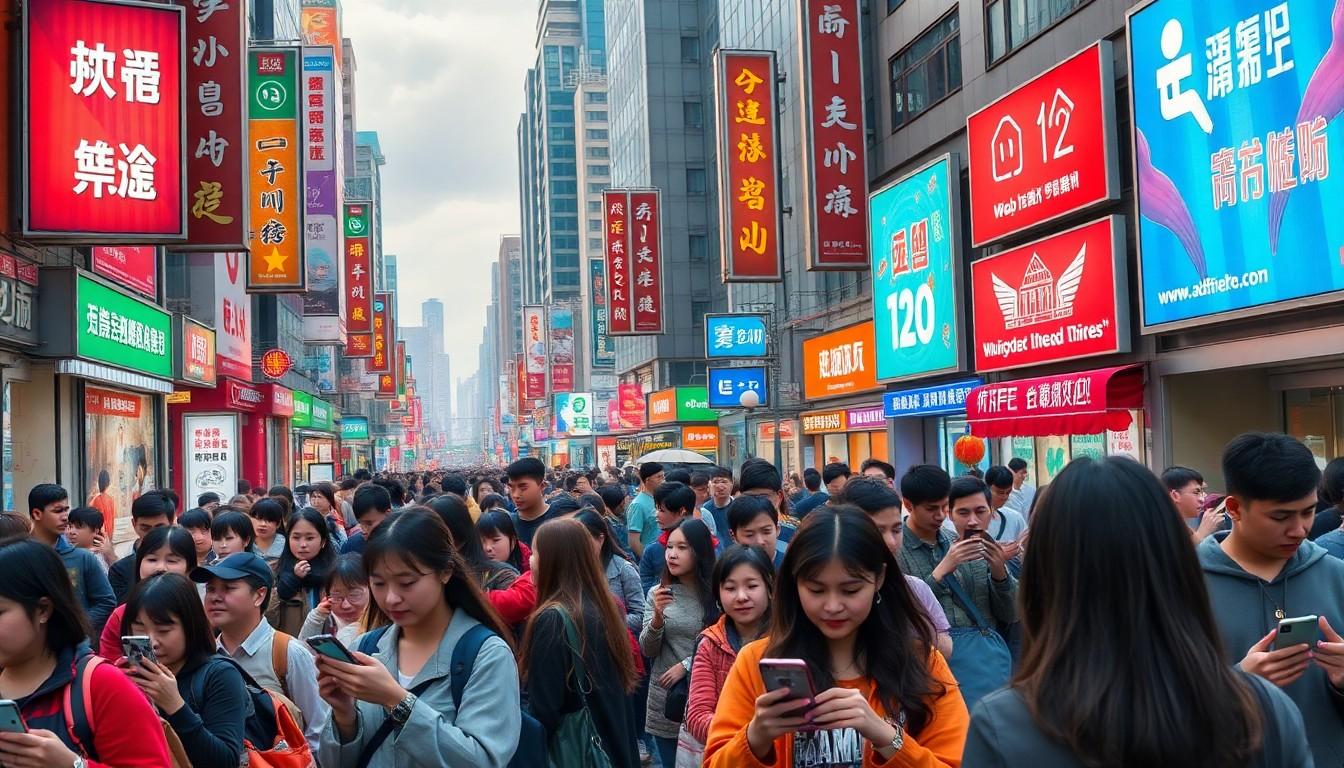In a world where social media reigns supreme, China’s digital landscape is a vibrant tapestry of platforms that can make even the savviest social media guru raise an eyebrow. Forget Facebook and Twitter; in China, it’s all about WeChat, Douyin, and Weibo, where users connect, share, and engage in ways that can leave outsiders scratching their heads.
Chinese Social Media Platforms
China’s digital landscape features a variety of social media platforms, each serving distinct purposes. These platforms play a crucial role in daily communication and business interactions.
Popular Platforms in China
WeChat dominates the social media scene, boasting over 1.2 billion monthly active users. Douyin, the Chinese version of TikTok, captivates users with short-form video content, highlighting trends and creativity. Weibo functions as a microblogging site, similar to Twitter, attracting 500 million monthly active users and serving as a crucial news source. Xiaohongshu combines social media with e-commerce, targeting younger demographics. Baidu Tieba allows users to create and join communities centered on shared interests, further diversifying the platform landscape.
Unique Features of Chinese Platforms
Chinese platforms often include integrated payment systems, enhancing user convenience. WeChat integrates messaging, social networking, and payment solutions, making it extremely versatile. Douyin’s algorithm promotes content discovery, ensuring personalized user experiences. Weibo features trending topics, enabling real-time discussions around social issues and news events. Unique content formats, such as live streaming and short videos, provide interactive engagement opportunities across these platforms. Privacy features differ significantly from Western counterparts, reflecting local regulations and user preferences.
Comparison with Western Social Media

Chinese social media platforms exhibit notable differences from Western counterparts, particularly in user base and content moderation.
User Base Differences
WeChat dominates China with over 1.2 billion monthly active users. Douyin captures attention with short videos, attracting a younger demographic. In contrast, platforms like Facebook and Instagram cater primarily to a global audience but focus on different engagement styles. Weibo, mirroring Twitter, has around 500 million monthly users, facilitating role as a news hub. The age group using Chinese platforms skews younger, often under 30, while Western platforms maintain a broader age range. Cultural preferences also influence platform popularity, generating distinct user experiences tailored to regional habits and trends.
Content Moderation Practices
China’s content moderation practices prioritize government regulations, aiming to align online discourse with national interests. Platform operators proactively filter content, with WeChat employing strict guidelines to manage user interactions. Douyin utilizes advanced algorithms to recommend user-generated content while adhering to government mandates. Western platforms, on the other hand, focus more on user autonomy, allowing greater freedom but facing backlash over misinformation and harmful content. Weibo’s real-time discussions undergo close scrutiny to meet local standards, reflecting the supervised nature of digital communication in China. These measures contrast sharply with the relatively laissez-faire approach common in Western social media.
Impact on Society and Culture
Chinese social media platforms significantly influence society and culture in various ways. They reshape communication dynamics and contribute to activism and social change.
Influence on Communication Styles
Communication styles adapt due to the unique features of platforms like WeChat and Douyin. Users engage through rich media formats such as videos and images, enhancing expression. Interaction often prioritizes brevity, leading to the emergence of concise language and popular memes. This shift encourages creativity, allowing younger audiences to connect with peers globally. Additionally, real-time discussions on Weibo cultivate a fast-paced exchange of ideas, reflecting the urgency of contemporary issues.
Role in Activism and Social Change
Social media acts as a powerful tool for activism in China. Platforms facilitate awareness campaigns on pressing issues like environmental protection and social justice. Users leverage this unique space to mobilize support and foster community around shared causes. For instance, campaigns on Weibo often gain traction, sparking discussions that challenge the status quo. Douyin’s video creation tools amplify voices, allowing users to showcase personal stories and advocate for change. Overall, these platforms encourage civic engagement and foster a culture of activism among users.
Business and Marketing Opportunities
Chinese social media platforms present unique business and marketing opportunities due to their extensive reach and user engagement.
Advertising Strategies
Targeted advertising strategies effectively harness the extensive user data available on platforms like WeChat and Douyin. Businesses can create tailored campaigns that resonate with specific demographics, helping to enhance conversion rates. Visual content, especially short videos, significantly outperforms traditional formats. Douyin’s algorithm allows brands to reach potential customers based on their interests and behaviors, fostering highly personalized user experiences. Moreover, integrating influencer partnerships often amplifies brand messages and increases audience trust.
E-commerce Integration
E-commerce integration stands out as a defining feature of Chinese social media platforms. Platforms like Xiaohongshu allow users to share product reviews while enabling direct purchases, creating a seamless shopping experience. Businesses leverage WeChat’s mini-programs to facilitate transactions without leaving the app, significantly boosting sales potential. User-generated content often drives engagement, encouraging users to share their purchases and experiences. The blend of social networking and shopping not only enhances customer retention but also transforms the online retail landscape in China.
Chinese social media platforms are reshaping the way people communicate and interact in the digital age. Their unique features and functionalities cater to the preferences of a diverse user base while driving significant engagement. The integration of e-commerce within these platforms creates seamless shopping experiences that are transforming retail.
As these platforms continue to evolve they’ll likely influence global trends in social media and digital marketing. Understanding their dynamics is essential for businesses looking to tap into one of the world’s largest online markets. Embracing the complexities of Chinese social media can unlock new opportunities for connection and growth.

